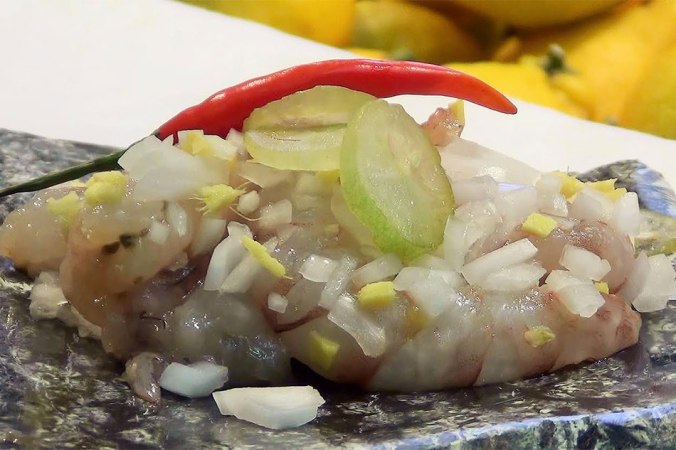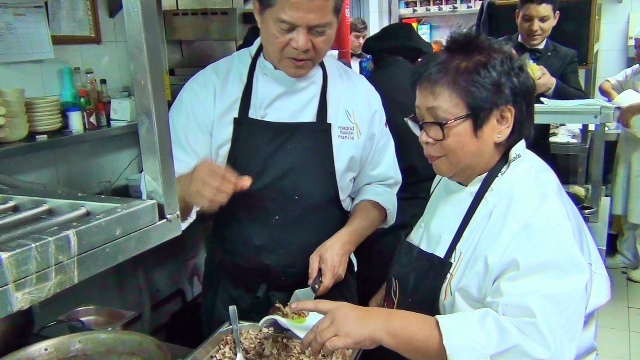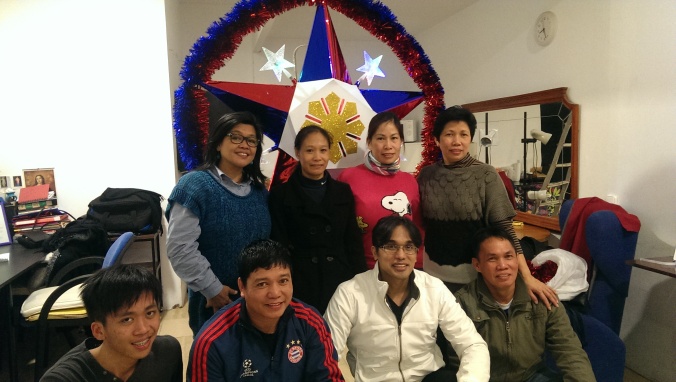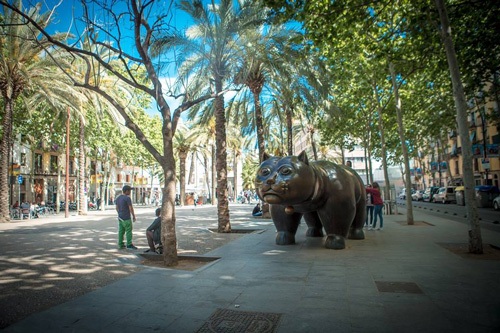SPAIN – Filipino Martial Arts (FMA) are becoming more and more popular in Spain.
Every Friday, Saturday, and Sunday, Jhonee Llandejar teaches the techniques of Laraw, Kali, Pamuok to both Filipino and Spanish students in Fitness Place Sports Center in Barcelona.
Laraw, Kali, Pamuok, explained Llandejar, is a type of Filipino Martial Arts that employs the use of weapons such as wooden sticks Arnis and dirty boxing techniques.
Laraw means picture or reflection of the Kali weapon and the warrior. Kali means the use of weapons like Arnis and dagger, and Pamuok, which refers to hand-to-hand street fighting or no rules boxing techniques.
This type of martial arts is not only for self-defense, but also develops patience and self-control.
“Napaka-kumpleto niya, pwede mong ituro sa bata, pwede mong ituro sa matanda…sa mga babae. At saka kailangang-kailangan natin kasi mga Pinoy tayo, maliliit tayo. Yung sistema na pwede nating atakehin ‘tong isang ganitong kalaking tao, pwede tayong mag-defend sa sarili natin. Hindi tayo magpapa-bully, basta basta,” said Llandejar, who underwent FMA training in the Philippines and earned the rank of Guro.
Barcelona-based Filipinos Morland Magnayi and Daven Baraquel Magboo attend the sessions for health and self-defense reasons.
“At least mayroong self-defense ba, habang nag-e-exercise ka may natutunan ka sa sarili mo,” Magnayi said.
“Habang nasa kalye ka, hindi mo alam kung bigla ka na lang nanakawan alam mo yung gagawin mo para ma-defend mo yung sarili mo,” Baraquel pointed out.
The martial art also attracted interest of Spaniards despite mastering other combat sports.
Ruben Salas, who teaches boxing, said: “Most of my friends are Filipinos and I consider it very interesting because it trains the body both internally and externally and provides more defense than boxing,” said.
Filipino-Spanish taekwondo instructor Pepe Manuel wants to know more about Filipino culture through FMA.
“My mother is Filipino (so) it’s something that I want to learn, and its teaching method is more fluid. Perhaps, Korean taekwondo (and) Japanese karate although (have similarities with FMA) are very static, very rigid, but Arnis is very fluid with different method and employs a lot of strikes. I like it,” explained Manuel in Spanish.
Llandejar added that Filipino Martial Arts can trace its origin from precolonial fighting skills. Philippine hero Lapu-Lapu already showed expertise in the use of shield and weapon against Ferdinand Magellan’s heavily armored forces.
Filipino Martial Arts have also gained more international exposure, thanks to action stunts used in Hollywood blockbusters like Bourne Legacy and Fast and Furious 7. ABS-CBNnews.com
Watch the related TV report aired on Balitang Global, TFC, ABS-CBN:



































